| Published with Permission by: AmericanCivilWar.com |
Submitted by: Bob Redman
The battle for Chattanooga 23, 24, and 25 November 1863
See below comparative time table for the 25th of Nov., also 20 questions which other writers don't answer.
|
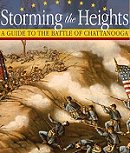 Storming the Heights: A Guide to the Battle of Chattanooga The Confederate victory of Chickamauga drove the Union Army of the Cumberland back to the key railroad hub of Chattanooga. In early October it had appeared that all Union gains in southern Tennessee might be lost  Rock of Chickamauga: The Life of General George H. Thomas Union General George Thomas was one of the five men most important in the North's victory. Military historians consider him one of the best defensive generals ever, a man who would have stood out in any war |
 Sherman's March: The First Full-Length Narrative of General William T. Sherman's Devastating March through Georgia and the Carolinas Beginning with the fall of Atlanta, the unrelenting aggressive slash and burn total warfare of General Sherman's Union troops, and then the final march into Raleigh |
|
| |
|
|
|
| 9:20 am | Hooker signals readiness | Thomas nudges Grant about Hooker (speculation) | Stevenson’s troops from Lookout Mountain march all night long north on ridge, tell their story en route |
| 9:30 am | Hooker receives order | Thomas sends Hooker order to move via flagmen | Stevenson’s troops begin to take position next to Cleburne |
| Hooker’s troops move, advance units already in valley | . | Corse starts frontal attacks against Swett’s battery on Tunnel Hill | |
| Bragg reports Hooker’s movement across valley. | Loomis starts attack toward tunnel | ||
| Bragg receives report of activity at Chattanooga Creek. Hooker sends Osterhaus across on first “stringers”. | . | Bushbeck joins Loomis | |
| 1:35 pm | Hooker announces he needs one more hour to complete bridge. Osterhaus secures Rossville Gap | Riflefire heard as Osterhaus attacks Rossville Gap. This is also heard up on the ridge. | Mathies attacks Tunnel Hill from west. |
| 2:00 pm | . | |
. |
| 2:30 pm at latest |
Hooker’s cannons cross Chattanooga creek and begin firing. Osterhaus secures Rossville Gap | Grant returns, sees Sherman’s troops fleeing from Tunnel Hill. Cannon fire from south audible. Grant suggests that Thomas move troops forward to the rifle pits and stop | Sherman’s final attack against Cleburne is repulsed, Cleburne counter-attacks, takes prisoners. Sherman calls it quits, does not tell Grant. |
| 3:00 pm | Cruft and Hooker drive Clayton. Osterhaus moves along rear of ridge without opposition. Impossible that Stewart is unaware of this movement. | Sound of battle from Hooker’s direction intensifies. Grant sharply issues his verbal order for Thomas’s men to move to the rifle pits and stop. | . |
| 3:15 to 3:30 pm |
Geary moves against Stewart from southwest. Osterhaus continues north toward center, still no opposition. | Battle noise moves further north. Grant again issues the verbal order for Thomas’ men to move to the rifle pits and stop. | . |
| 3:40 pm | Panicked troops from Clayton and Stewart units flee towards center and down eastern side of ridge. | The 6 cannon fire in successions to initiate the advance of Thomas’s 4th and 14th corps toward the ridge. | . |
| 4:00 pm | Cruft and Hooker drive Stewart, Johnson advances up ridge from west. | 4th and 14th corps engage Confederates in rifle pits. Some continue up ridge, rest follows, Grant rages. Panic intensifies in Bragg’s center. | . |
| 4:50 pm | Osterhaus nears Crutchfield Rd. behind Bragg’s headquarters | Willich’s division breaks through at Sharp’s spur. | . |
| 5:00 pm | Stewart’s division collapses. Osterhaus takes 2000 prisoners. | . | Sherman apprised by Grant that Thomas has “carried the hill”: “Now is your time to attack…”. Sherman’s reply to Grant missing in records. |
| 6:00 pm | Osterhaus meets Johnson’s troops on top of ridge. | Johnson’s troops almost shoot Osterhaus. | . |
| after 6:00 pm |
Hooker bivouacs on ridge, troops celebrate. | Sheridan gets some men killed pursuing in darkness. | Cleburne forms rear guard, Sherman does not pursue. |
 Fighting Joe Hooker Union general Joseph Hooker assumed command of an army demoralized by defeat and diminished by desertion. Acting swiftly, the general reorganized his army, routed corruption among quartermasters, improved food and sanitation, and boosted morale by granting furloughs and amnesties. The test of his military skill came in the battle of Chancellorsville. It was one of the Union Army's worst defeats The White Tecumseh: A Biography of General William T. Sherman Utilizing regimental histories, historian Hirshon offers a sympathetic yet excellent biography of one of the more noted Civil War generals, best remembered for burning Atlanta, cutting a swath of destruction across Georgia, then creating total destruction in South Carolina, including the burning of Columbia. Hirshon gives us an insight into how Sherman's own troops felt about him and his relationships with fellow generals, especially Grant. The author not only describes Sherman's role in the war but also details his early life and family problems. The latter part of the book deals with his life after the war, especially with the Indians in the West as well as his relationships with Presidents Johnson and Grant. |
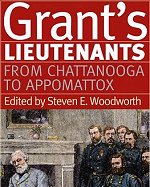 Grant's Lieutenants: From Chattanooga to Appomattox This new volume assesses Union generalship during the final two years of the Civil War. Steven Woodworth, one of the war's premier historians, is joined by a team of scholars-- Grimsley, Marszalek, and Hess, among others--who critique Ulysses S. Grant's commanders |
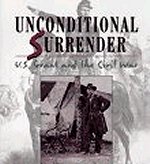 Unconditional Surrender: U. S. Grant and the Civil War This is the best juvenile biography on Ulysses S. Grant by a wide margin. Marrin has done an excellent job in introducing Grant to a young audience. I highly recommend it. |
 Grant's Secret Service: The Intelligence War from Belmont to Appomattox The first scholarly examination of the use of military intelligence under Ulysses S. Grant's command during the Civil War. Feis makes the new and provocative argument that Grant's use of the Army of the Potomac's Bureau of Military Information played a significant role in Lee's defeat |
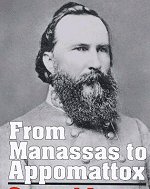 From Manassas to Appomattox: General James Longstreet According to some, he was partially to blame for the Confederate defeat at Gettysburg; according to others, if Lee had followed Longstreet's advice, they would have won that battle. He has been called stubborn and vain; and he has been lauded as one of the greatest tacticians of the Civil War |
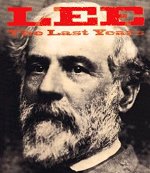 Lee The Last Years After his surrender at Appomattox, Robert E. Lee lived only another five years - the forgotten chapter of an extraordinary life. These were his finest hours, when he did more than any other American to heal the wounds between North and South |
 Robert E. Lee This book not only offers concise detail but also gives terrific insight into the state of the Union and Confederacy during Lee's life. Lee was truly a one of kind gentleman and American, and had Virginia not been in the south or neutral, he ultimately would have led the Union forces. |
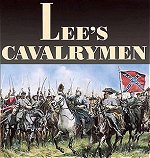 Lee's Cavalrymen: A History of the Mounted Forces of the Army of Northern Virginia, 1861-1865 The cavalry of the Army of Northern Virginia its leadership, the military life of its officers and men as revealed in their diaries and letters, the development of its tactics as the war evolved, and the influence of government policies on its operational abilities. All the major players and battles are involved |
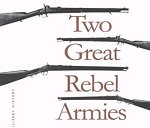 Two Great Rebel Armies: An Essay in Confederate Military History The Army of Northern Virginia was able to compile a large number of impressive victories during the war. The Army of Tennessee was only able to win at Chickamauga, and even that victory proved barren strategically. |
 Civil War Combat: America's Bloodiest Battles The violent mayhem of the hornet's nest at Shiloh, the valiant charge on the sunken road at Antietam, the carnage in the wheat field at Gettysburg, and the brutal fighting at Cold Harbor |
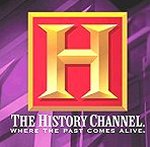 The Civil War: To the Finish: Sherman and the March to the Sea After 3 years of battles, a Union general captured Atlanta and decided to change the course of the war for good. That general was William Tecumseh Sherman |
 History Channel Presents Sherman's March In November 1864, Sherman and an army of 60,000 troops began their month-long march from Atlanta to Savannah. Burning crops, destroying bridges and railroads, and laying waste to virtually everything in his path |
 Gettysburg / Gods and Generals The tide of the war changes during three fierce days of combat at Gettysburg [Disc 1] the gripping saga of the tactics command errors and sacrifices behind the bloodiest battle ever fought on U.S. soil. Gods and Generals [Disc 2] reveals the spirited allegiances and fierce combat of earlier Civil War struggles |
 History Channel Presents The Civil War From Harper's Ferry, Fort Sumter, and First Bull Run to Shiloh, Antietam, and Gettysburg. The most legendary Civil War battles in brilliant detail. A selection of the soldiers and legendary leaders. |
 The Civil War - A Film by Ken Burns Here is the saga of celebrated generals and ordinary soldiers, a heroic and transcendent president and a country that had to divide itself in two in order to become one |
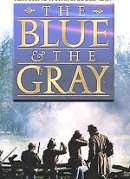 The Blue and the Gray The Complete Miniseries The Civil War proved a backdrop for this 1982 miniseries. Complete and uncut three disc set. Two families divided by the War Between the States. A Southerner caught when he becomes a war correspondent for the Northern newspaper. He finds himself where history's in the making from the Battle of Bull Run to Abraham Lincoln's assassination |
 Blue Vs. Gray - Killing Fields Relive the most vicious fighting of the Civil War, in which General Ulysses S. Grant forcibly reversed the tide of the conflict by paying with the blood of thousands. It was a desperate time for the Union |